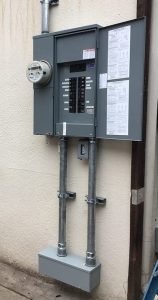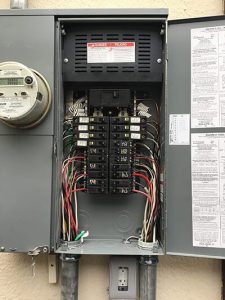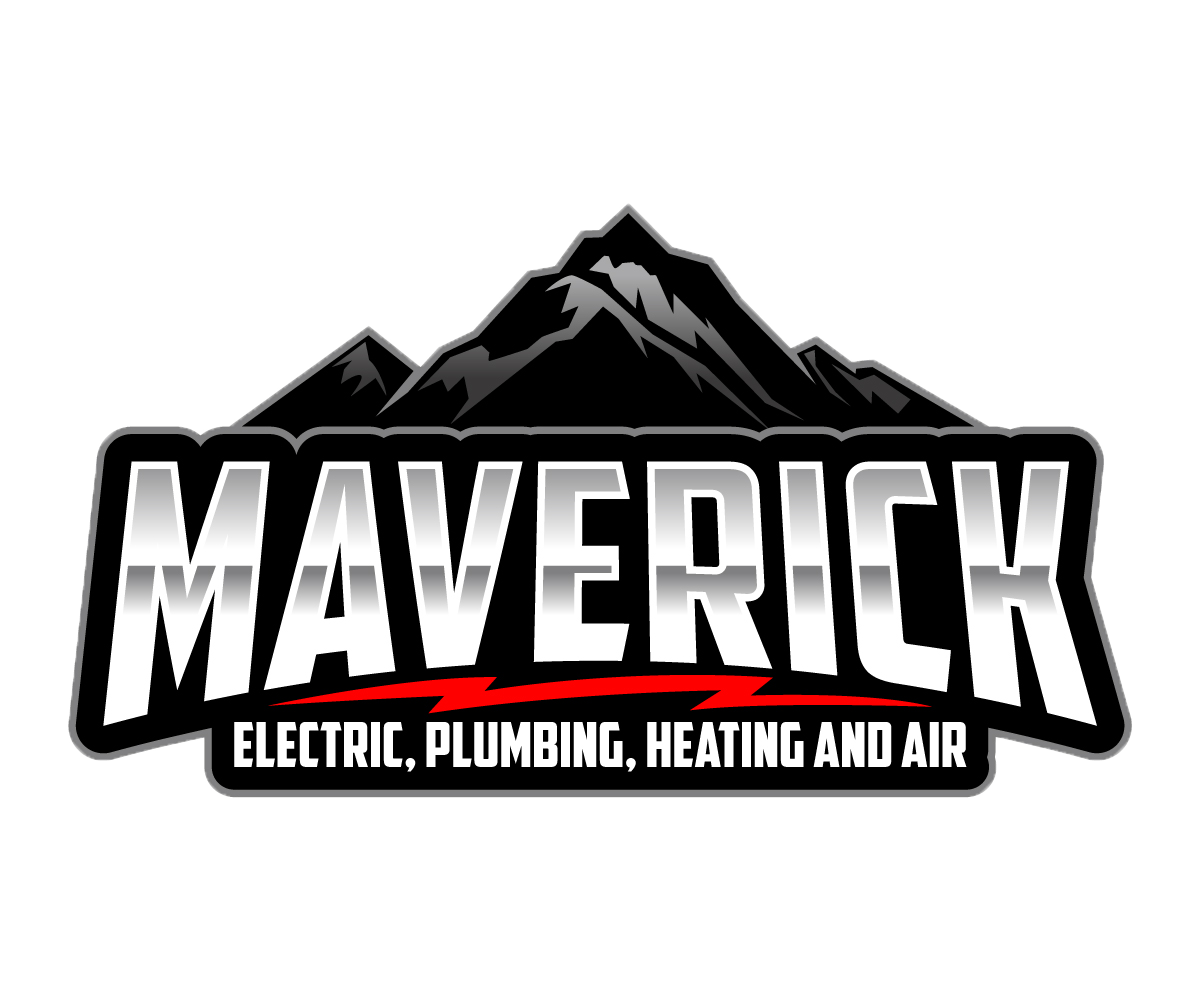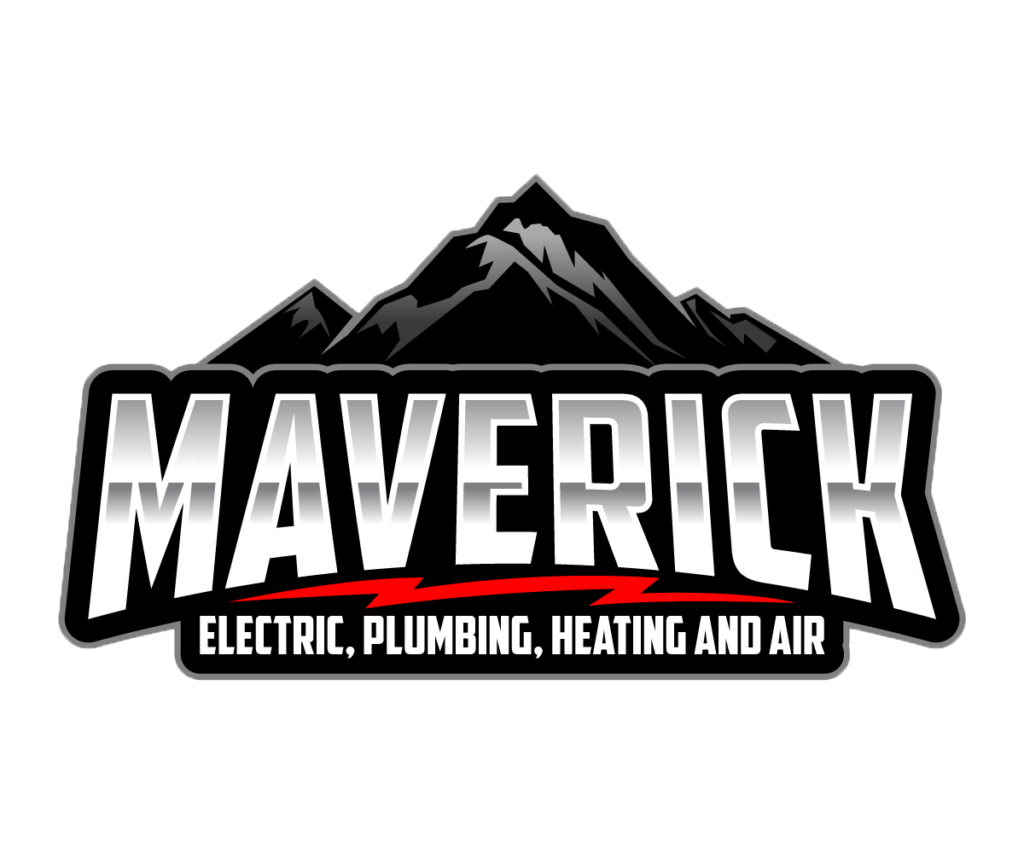What To Know About Electrical Panels
It’s likely that you don’t give your electrical panels much thought unless there’s a problem. But without them connecting the electrical wires of your home to the external wires coming from the street, you wouldn’t have the convenience of electricity that you regularly rely on. Although they’re unseen, electrical panels are a major piece of the puzzle when it comes to making sure your home electricity runs smoothly and safely. Here’s what you need to know about the electrical panels in your home and how to make sure they’re in good shape.

What Are The Different Types Of Electrical Panels?
The different panels throughout your home each perform different tasks; they work together to make sure electricity is distributed throughout the home safely.
The Five Types Of Electrical Panels Are:
- Main breaker panels
- Fuse boxes
- Main lug panels
- Sub-panels
- Transfer switches
The main breaker panel acts as the parent panel—it is the primary connection between the external wires coming from the city and the internal wires of your home. It regulates the circuit breakers and the energy consumption throughout your entire house. Fuse boxes are designed to prevent circuit overflow and will short out whenever there is excessive electricity to that circuit. For example, if you’ve ever used a hairdryer that “blew a fuse”, that was the fuse box keeping the circuit from being overloaded. Typically, these types of panels are found in homes built before the 1980s.
Main lug panels are usually installed downstream of the main breaker panel and they act as secondary electrical load bearers.
Sub-panels are used when there are multiple circuits needed in the same area. They don’t have their own disconnects, but they help to adjust the electrical flow throughout the various circuits in your home.

Sub-panels are used when there are multiple circuits needed in the same area. They don’t have their own disconnects, but they help to adjust the electrical flow throughout the various circuits in your home.
Transfer switches are a type of sub-panel that is used when a backup generator is needed. They transfer generator power to electrical power through the breaker panel.
How Do I Know If My Electrical Panel Needs Repair?
Electrical panels are a vital part of your home’s electrical system, and making sure they’re running well ensures the safety of your home and your family. It’s important to have your electrical panels inspected annually and have them repaired and replaced as needed. By keeping them in good condition, you can eliminate the risk of electrical fires in your home.
Signs Your Electrical Panel Needs Maintenance:
- Rusted electrical components
- Circuit breakers that trip consistently
- Faulty breakers
- Old home with outdated wiring
- Flickering lights
- Using a lot of power strips
Do You Need An Electrical Panel Inspection? Call Maverick Electric, Heating & Air To Schedule Your Appointment Today!
The SERVICES We Offer
The best in El Dorado, Placer, Sacramento, Solano, Sutter, Yolo, and Yuba counties.
See What Your Neighbors Have Been Saying About Our Services!






We Provide The Highest Quality HVAC & Electric Installation & Repair In California

Areas We Serve
- Antelope
- Auburn
- Cameron Park
- Carmichael
- Citrus Heights
- Davis
- El Dorado Hills
- Elk Grove
- Elverta
- Fair Oaks
- Folsom
- Galt
- Granite Bay
- Grass Valley
- Lincoln
- Lodi
- Loomis
- Mather
- Marysville
- Newcastle
- North Highlands
- Olivehurst
- Orangevale
- Penryn
- Pilot Hill
- Placerville
- Plumas Lake
- Rancho Cordova
- Rancho Murieta
- Rio Linda
- Rio Oso
- Rocklin
- Roseville
- Sacramento
- Sheridan
- Vacaville
- West Sacramento
- Wheatland
- Woodland
- Yuba City

